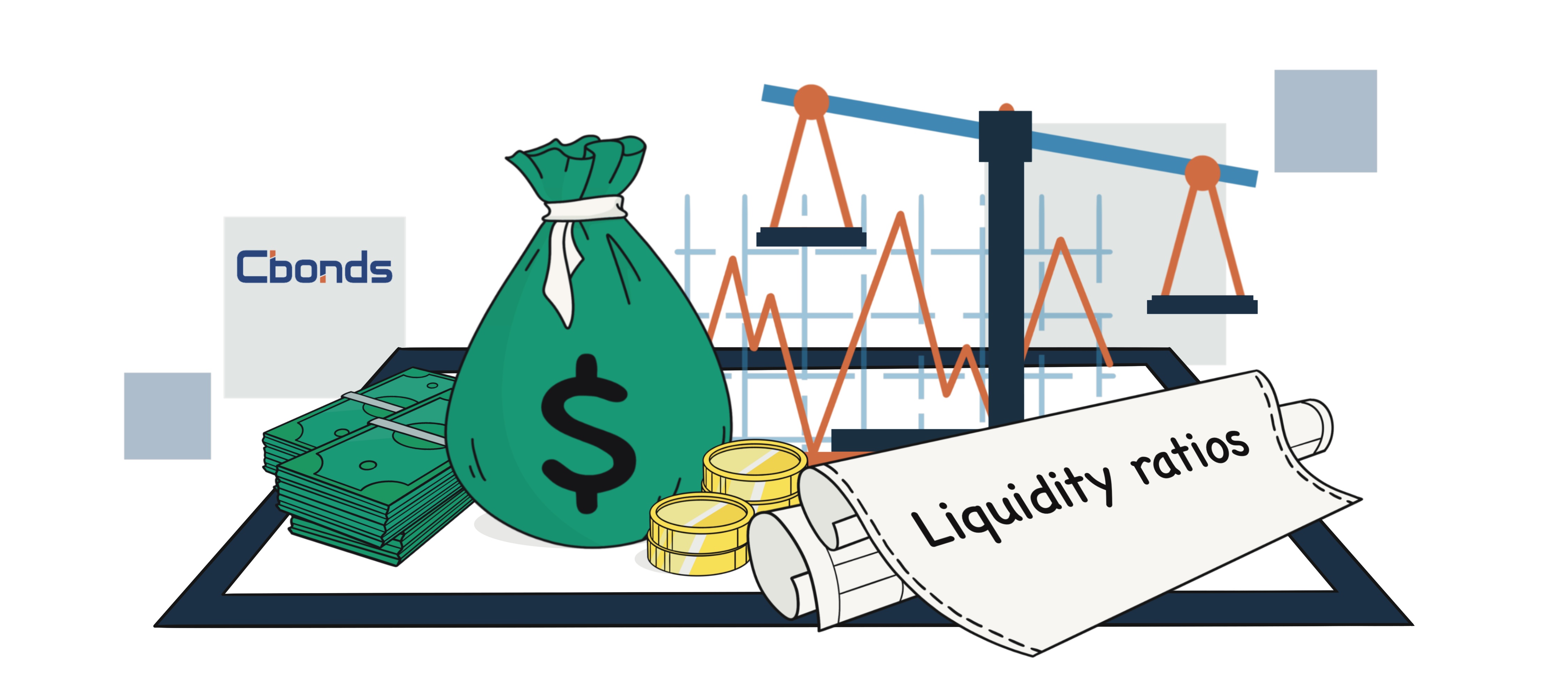By
Konstantin Vasilev Member of the Board of Directors of Cbonds, Ph.D. in Economics
Updated September 11, 2023
What are liquidity ratios?
Liquidity ratios constitute a significant set of financial measures employed to assess a borrower’s capacity to settle existing short-term debts without relying on external funding. These ratios gauge a company’s capability to fulfill debt commitments and its level of financial security by computing metrics such as the current, quick, and operating cash flow ratios.
Understanding liquidity ratios
Liquidity ratios determine how swiftly and economically a company can convert assets into cash. Liquidity ratios prove most valuable when employed comparatively, and this assessment can take the form of either internal or external analysis.
In the case of internal analysis concerning liquidity ratios, it entails evaluating various accounting periods that adhere to consistent accounting methods. By contrasting past periods with current operations, analysts can monitor shifts within the business. In general, a higher liquidity ratio signifies enhanced liquidity and a more robust capacity to cover outstanding debts.
Alternatively, external analysis involves juxtaposing the liquidity ratios of a company with those of another firm or even an entire industry. This information proves valuable for evaluating a company’s strategic positioning in relation to competitors and for setting benchmark objectives. However, the effectiveness of liquidity ratio analysis can be limited when applied across diverse industries due to distinct financing structures required by different businesses. Furthermore, comparing liquidity ratios across businesses of varying sizes and located in different geographic regions might yield less meaningful insights.

Types of liquidity ratios
The most common types of liquidity ratios are as follows:
-
The Current Ratio. The current ratio gauges a company’s capability to satisfy its short-term financial obligations (due within a year) utilizing its overall current assets, such as cash, accounts receivable, and inventories. A higher ratio indicates a stronger liquidity position:
Current Ratio = Current Assets / Current Liabilities
-
The Quick Ratio. The quick ratio assesses a company’s ability to meet short-term obligations using its most readily convertible assets, excluding inventories from the current assets calculation. It’s also referred to as the acid-test ratio:
Quick Ratio = (Cash & Cash Equivalents + Marketable Securities + Accounts Receivable) / Current Liabilities Alternatively: Quick Ratio = CL / (C + MS + AR) Or: Quick Ratio = (Current Assets - Inventory - Prepaid Expenses) / Current Liabilities
-
The Cash Ratio. The cash ratio, also referred to as cash asset ratio or absolute liquidity ratio, ensures a company’s liquidity by comparing its total cash and cash equivalents to its current liabilities. A company’s cash ratio evaluates its potential to settle short-term debt using cash or highly liquid assets. Creditors find this information valuable when determining lending decisions.
Cash Ratio = (Cash + Cash Equivalent Assets) / Current Liabilities
Unlike other liquidity ratios, the cash ratio presents a more cautious view of a company’s debt coverage because it exclusively considers cash or cash-equivalent holdings, excluding other assets like accounts receivable.
-
The Net Working Capital Ratio. This is a vital financial metric that provides insights into a company’s short-term financial health and its ability to manage day-to-day operations. Calculated by subtracting current liabilities from current assets, the Net Working Capital Ratio formula is (Current Assets - Current Liabilities). A positive ratio indicates that a company has more current assets than current liabilities, implying it possesses the necessary resources to cover its short-term obligations and maintain operational efficiency. Conversely, a negative ratio could suggest potential liquidity challenges. This ratio offers valuable information to stakeholders, creditors, and investors regarding a company’s operational liquidity and ability to effectively navigate fluctuating business cycles.
Solvency ratios vs. liquidity ratios
In contrast to liquidity ratios, solvency ratios delve into a company’s capacity to fulfill its comprehensive financial commitments and long-term debts. Solvency revolves around a company’s overarching capability to honor debt responsibilities and sustain business operations, whereas liquidity primarily concerns immediate or short-range financial matters.
For a company to be deemed solvent, its total assets must surpass its total liabilities. Conversely, to be considered liquid, a company should possess more current assets than current liabilities. While solvency and liquidity are distinct, liquidity ratios can offer an initial insight into a company’s solvency prospects.
The solvency ratio is computed by dividing a company’s net income and depreciation by its combined short-term and long-term liabilities. This computation indicates whether the company’s net income is adequate to cover its overall liabilities. Typically, a higher solvency ratio denotes a more attractive investment proposition for a company.
Bond Screener
Watchlist
Excel Add-in
API












